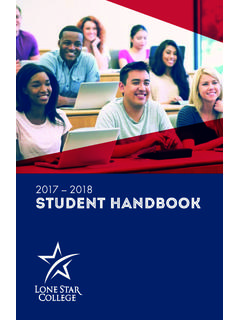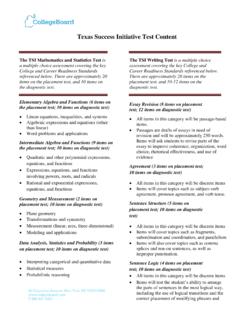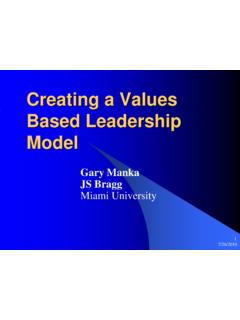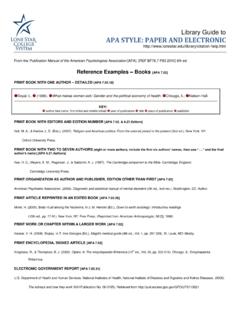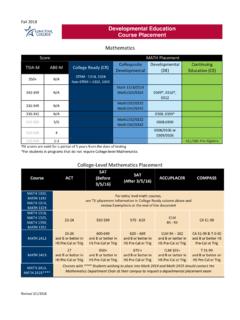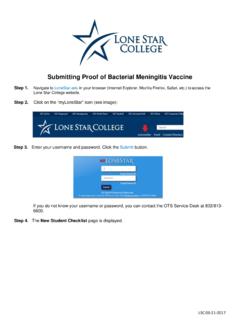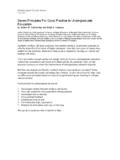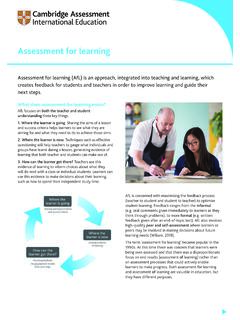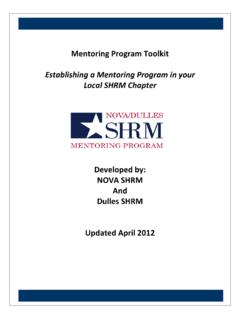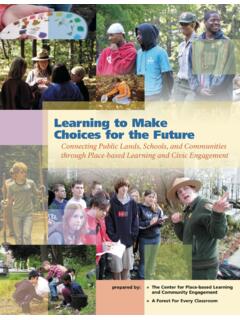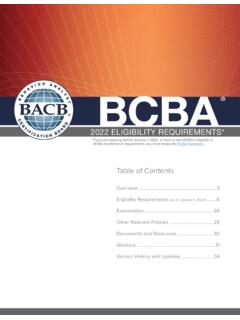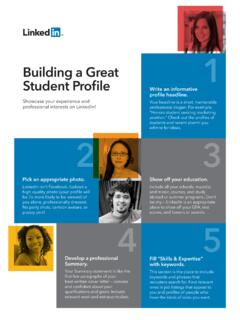Transcription of Seven Principles For Good Practice in Undergraduate …
1 Washington Center News Fall 1987. Seven Principles For good Practice in Undergraduate Education by Arthur W. Chickering and Zelda F. Gamson Arthur Chickering is Distinguished Professor of Higher Education at Memphis State University. On leave from the Directorship of the Center for the Study of Higher Education at Memphis State, he is Visiting Professor at George Mason University. Zelda Gamson is a sociologist who holds appointments at the John W. McCormack Institute of Public Affairs at the University of Massachusetts-Boston and in the Center for the Study of Higher and Postsecondary Education at the University of Michigan.
2 Apathetic students, illiterate graduates, incompetent teaching, impersonal campuses-so rolls the drum-fire of criticism of higher education. More than two years of reports have spelled out the problems. States have been quick to respond by holding out carrots and beating with sticks. There are neither enough carrots nor enough sticks to improve Undergraduate education without the commitment and action of students and faculty members. They are the precious resources on whom the improvement of Undergraduate education depends. But how can students and faculty members improve Undergraduate education?
3 Many campuses around the country are asking this question. To provide a focus for their work, we offer Seven Principles based on research on good teaching and learning in colleges and universities. good Practice in Undergraduate education: 1. Encourages contact between students and faculty 2. Develops reciprocity and cooperation among students. 3. Encourages active learning . 4. Gives prompt feedback. 5. Emphasizes time on task. 6. Communicates high expectations. 7. Respects diverse talents and ways of learning . We can do it ourselves-with a little bit of . Washington Center News Fall 1987. A Focus for Improvement These Seven Principles are not ten commandments shrunk to a 20th century attention span.
4 They are intended as guidelines for faculty members, students, and administrators- with support from state agencies and trustees-to improve teaching and learning . These Principles seem like good common sense, and they are -- because many teachers and students have experienced them and because research supports them. They rest on 50. years of research on the way teachers teach and students learn, how students work and play with one another, and how students and faculty talk to each other. While each Practice can stand on its own, when all are present their effects multiply. Together, they employ six powerful forces in education: Activity Expectations Cooperation Interaction Diversity Responsibility good practices hold as much meaning for professional programs as for the liberal arts.
5 They work for many different kinds of students-white, black, Hispanic, Asian, rich, poor, older, younger, male, female, well -prepared, underprepared. But the ways different institutions implement good Practice depends very much on their students and their circumstances. In what follows, we describe several different approaches to good Practice that have been used in different kinds of settings in the last few years. In addition, the powerful implications of these Principles for the way states fund and govern higher education and for the way institutions are run are discussed briefly at the end.
6 As faculty members, academic administrators, and student personnel staff, we have spent most of our working lives trying to understand our students, our colleagues, our institutions and ourselves. We have conducted research on higher education with dedicated colleagues in a wide range of schools in this country. We draw the implications of this research for Practice , hoping to help us all do better. We address the teacher's how, not the subject-matter what, of good Practice in Undergraduate education. We recognize that content and pedagogy interact in complex ways. We are also aware that there is much healthy ferment within and among the disciplines.
7 What is taught, after all, is at least as important as how it is taught. In contrast to the long history of research in teaching and learning , there is little research on the college curriculum. We cannot, therefore, make responsible recommendations about the content of good Undergraduate education. That work is yet to be done. Washington Center News Fall 1987. This much we can say: An Undergraduate education should prepare students to understand and deal intelligently with modern life What better place to start but in the classroom and on our campuses? What better time than now? Seven Principles of good Practice 1.
8 Encourages Contact Between Students and Faculty Frequent student-faculty contact in and out of classes is the most important factor in student motivation and involvement. Faculty concern helps students get through rough times and keep on working. Knowing a few faculty members well enhances students'. intellectual commitment and encourages them to think about their own values and future plans. Some examples: Freshman seminars on important topics, taught by senior faculty members, establish an early connection between students and faculty in many colleges and universities. In the Saint Joseph's College core curriculum, faculty members who lead discussion groups in courses outside their fields of specialization model for students what it means to be a learner.
9 In the Undergraduate Research Opportunities Program at the Massachusetts Institute of Technology, three out of four undergraduates have joined three-quarters of the faculty as junior research colleagues in recent years. At Sinclair Community College, students in the College Without Walls program have pursued studies through learning contracts. Each student has created a resource group,' which includes a faculty member, a student peer, and two community resource faculty members. This group then provides support and assures quality. Reciprocity and Cooperation Among Students learning is enhanced when it is more like a team effort than a solo race.
10 good learning , like good work, is collaborative and social, not competitive and isolated. Working with others often increases involvement in learning . Sharing one's own ideas and responding to others' reactions sharpens thinking and deepens understanding. Some examples: Even in large lecture classes, students can learn from one another. learning groups are a common Practice , in which five to Seven students meet regularly during class throughout the term to solve problems set by the instructor. Many colleges use peer tutors for students who need special help. learning communities are another popular way of getting students to work together.
